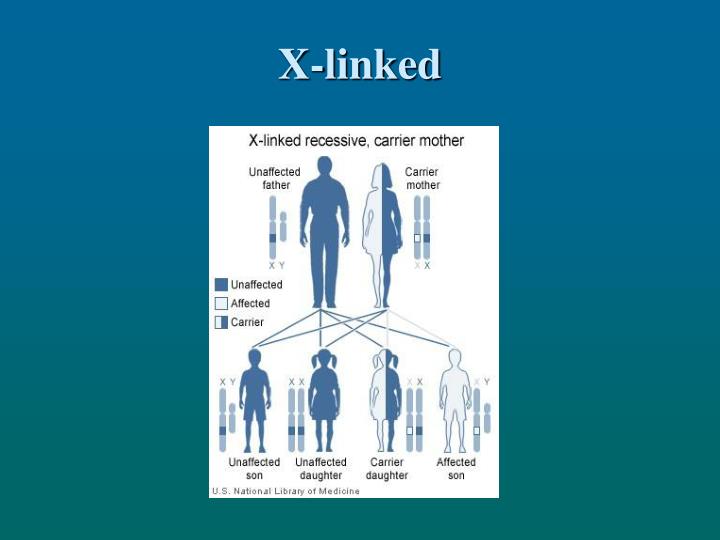
The chance of inheriting and expressing the disorder phenotype is dependent on the genotype and phenotype of the parents. Also, autosomal dominant disorders rarely skip generations because they only require the inheritance of one dominant allele to express the phenotype of the disorder.

Since autosomal dominant disorders involve autosomes or the non-sex chromosomes, the disorders affect males and females equally. The most expeditious way to determine the autosomal dominant inheritance pattern of a disorder within a family is by analyzing the family pedigree. Please see Figure 1 for segregation, as illustrated through a Punnett Square. The classic example is as follows: if one parent is affected with an autosomal dominant disorder, thus heterozygous (Aa), while the other parent is not affected and homozygous (aa), then 50% of the offspring will have the chance of 1) receiving one dominant allele, resulting in the heterozygous (Aa) state and being affected with the disorder or 2) receiving both recessive alleles, resulting in the homozygous (aa) state and not being affected with the disorder. Following Mendel’s Law of Dominance and Uniformity, only one dominant allele within the disease gene is necessary for an individual to be affected or show the phenotype. Disorders that follow an autosomal dominant mode of inheritance manifest when an individual inherits at least one dominant allele (A) for a disorder gene.

Mendel’s laws come to light within human pathologies in the way of single-gene or monogenic disorders. For example, when genes occur on the same chromosome, they can be linked and not follow this law. This concept was later verified with chromosomes, though also disproven in some instances. Third, the Law of Independent Assortment (Law of Reassortment) states that the alleles of different genes segregate independently of one another during gametogenesis and are distributed independently of one another in the next generation. Second, the Law of Segregation states that the two alleles for each gene separate from each other during gametogenesis so that the parent may only pass off one allele thus, the offspring can only inherit one allele from each parent. If an organism inherits at least one dominant variant, then it will display the effect, or phenotype, of the dominant allele. Those traits that are not dominant are termed recessive.

These simple changes to the phenotype, or the trait displayed in an organism, can be explained through changes in our genes. Mendel's laws include the Law of Dominance and Uniformity, the Law of Segregation, and the Law of Independent Assortment.įirst, the Law of Dominance and Uniformity states that some alleles, which are variants of a particular gene found at the same chromosomal locus or location, are dominant over the other alleles for a given gene.
#Are dominant traits more common manual#
We now understand that these traits are encoded in our instruction manual or our DNA.
#Are dominant traits more common skin#
The field of genetics was born through meticulous studies in a monastery garden by a 19th-century monk, Gregor Mendel. His proposed laws explained the modes of inheritance of characteristic traits passed on through generations, such as the flower color of a pea plant. Though it would be many years before the term gene was introduced and much has been learned since his initial observations, the laws have withstood our advances and understanding of biology, with some interesting exceptions. Gregor Mendel proposed three laws explaining the inheritance of traits visible through generations - the characteristic of pea skin - wrinkled or smooth, the color of a pea plant flower - white, pink, red - among other features.


 0 kommentar(er)
0 kommentar(er)
